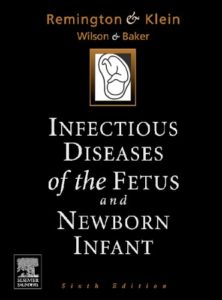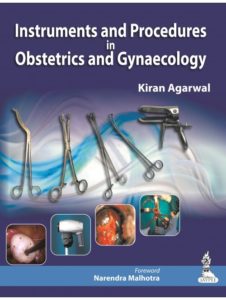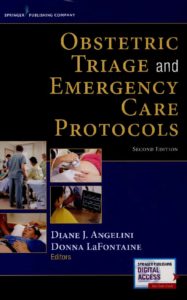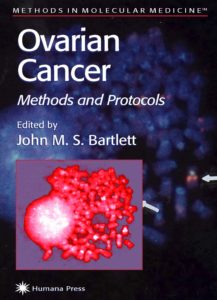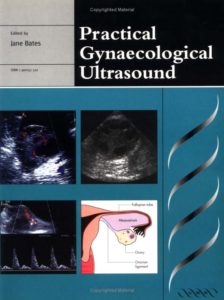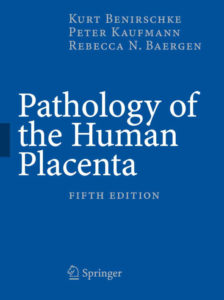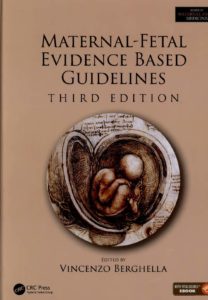Infectious Diseases of the Fetus and the Newborn Infant
Now in its 6th (30th anniversary) edition, Infectious Diseases of the Fetus and Newborn Infant remains the definitive textbook in this field and an indispensable resource for anyone caring for women, fetuese and newborn infants. The chapters remain thorough, well-referenced, and largely easy-to-read, and they consist of authoritative reviews of topics by leaders in the areas covered. All chapters have been updated with new information that has become available since the previous edition was published in 2001.
Agarwal K. Instruments and procedures in obstetris and gynecology
This book is a practical guide to instruments and procedures in obstetrics and gynaecology for trainees. Divided into sections by function and procedure, it covers more than 150 instruments, each described by name, parts, procedures it’s used for, and advantages, disadvantages and potential complications. General and specialised instruments are covered in depth, as well as diagnostic tools. Highly illustrated with colour photographs of instruments and operative procedures, the book places emphasis on basic, practical and essential to know information. Further reading suggestions are included to enhance learning. Key points. Practical guide to instruments and procedures in obstetrics and gynaecology. 150 instruments categorised by function and procedure. Step by step presentation of each instrument, its use, function and associated procedures * Includes more than 140 colour photographs and illustrations.
Angelini D. J. Obstetric triage and emergency care protocols
With more women than ever seeking obstetric triage and emergency services in obstetric triage units, obstetric providers need to be aware of triage assessment and evaluation protocols. This prize-winning pocket guide, containing management guidelines for obstetric triage/emergency settings, delivers critical information on obstetrics, midwifery, emergency, and family care for both students and seasoned clinicians. As with the first edition, all of the newly revised chapters take a strong collaborative and interprofessional approach to clinical conditions in the obstetric triage setting. With specific clinical protocols for more than 30 clinical situations, this fully updated second edition includes two completely new chapters on sepsis in pregnancy and triage acuity tools, along with updated guidelines for hypertension, sepsis, and postpartum complications. Each protocol comprises presenting symptomatology, patient history and data collection, physical exam findings, laboratory and imaging studies, differential diagnosis, and clinical management protocol/follow up. Plentiful figures and images, reference tables and standardized forms for reference and usage, algorithms, and clinical pathways illustrate chapter content. Esteemed contributors include midwives, nurse practitioners, obstetricians, gynecologists, and maternal fetal medicine faculty who evaluate nearly 30,000 OB visits per year.
Augustin G. Acute Abdomen During Pregnancy
This is the second edition of a well-received book that reflects the state of the art in diagnosis and treatment of acute abdominal disorders in the pregnant patient. It addresses a wide range of conditions, whether associated with or incidental to pregnancy, ranging from very rare to more common ones, such as acute appendicitis and acute cholecystitis. It offers an update on recommendations, guidelines and scenarios to provide fundamental support for all clinicians who might encounter such cases. The book highlights the importance of a rapid diagnosis to avoid serious consequences for both the mother and the fetus. Furthermore, it sheds light on the different imaging modalities of rare pathologies that can occur during pregnancy, helping clinicians and radiologists to better define underlying cases.
This new edition has been almost completely rewritten, and includes an additional section focusing on urologic emergencies, preterm labor and intra-abdominal pressure, as well as new figures and tables.
It is equally valuable for general and abdominal surgeons, gynecologists and obstetricians, as well as emergency physicians, who may be the first specialists to have clinical contact with this group of patients.
Baggish Michael Atlas of pelvic anatomy and gynecologic surgery
The updated edition of Atlas of Pelvic Anatomy and Gynecologic Surgery richly illustrates pelvic anatomy and surgical operations through full-color anatomic drawings, correlative surgical artwork with step-by-step photographs, and computer-assisted hybrid photo illustrations. Covering a compendium of gynecologic operations, including major and minor procedures and approaches, the techniques described feature a myriad of laparotomy, laparoscopic, robotic, hysteroscopic, vaginal, vulvar and cystoscopic operations. It is a truly comprehensive resource that’s well suited for practicing obstetricians-gynecologists, obstetrics-gynecology residents, general surgeons, subspecialists, nurses, and medical students with an interest in gynecology.
Bartlett J. M. S. Ovarian Cancer
Cancers are highly complex disease systems that require access to widely diverse laboratory techniques from a broad range of research disciplines, methods that are often beyond the knowledge of a single researcher. In Ovarian Cancer: Methods and Protocols, over one hundred well-respected scientists comprehensively review every aspect of the biology underlying ovarian cancer and present a detailed collection of easy-to-follow methods for illuminating this frequently fatal disease’s basic mechanisms. Here today’s investigators will find the broadest imaginable array of molecular biology techniques specially designed to determine not only tumor genetics, expression, and protein function, but also to elucidate the genetic mechanisms by which gene and immunotherapies may be perfected. The book’s highly experienced authors provide help in selecting the correct model system for each experimental approach, and offer extensive technical advice to facilitate the planning of individual experiments and ensure that researchers are using the optimal techniques for their research programs. Although structured primarily for ovarian cancer researchers, and using examples from that field, the techniques can be immediately applied to research in many other tumor types. Versatile and comprehensive, Ovarian Cancer Methods and Protocols constitutes a veritable treasury of well-proven expert methods that will help basic scientists and clinical researchers alike master the powerful technologies required for effective cancer research today.
Bates J. Practical Gynaecological Ultrasound
This user-friendly second edition provides a practical introduction to gynaecological ultrasound. It describes and explains background anatomy and physiology, instrumentation and how to make the best use of equipment. Emphasis is placed on how to maximise image quality, and how to recognise normal and pathological features. The volume also assesses other relevant diagnostic techniques and various management strategies, and evaluates the role of ultrasound as part of patient management. It includes chapters on pathology of the uterus, ovaries and adnexae, paediatric and trauma cases, together with management of infertility and other gynaecological perspectives of patient management. Illustrated throughout with numerous high-quality ultrasound images and line drawings, many of them new for this latest edition, this is essential reading for practitioners in training, including radiologists, gynaecologists and sonographers.
Benirschke K. Pathology of the human placenta
Most obstetricians and pediatricians would agree that the examination of the placenta often helps to explain an abnormal neona tal outcome. As early as in 1892, Ballantyne wrote, A diseased foetus without its placenta is an imperfect specimen, and a description of a foetal malady, unless accompanied by a notice of the placental condition, is incomplete. Deductions drawn from such a case cannot be considered as conc- sive, for in the missing placenta or cord may have existed the cause of the disease and death. During intrauterine life the foetus, the membranes, the cord and the placenta form an organic whole, and disease of any part must react upon and affect the others. Similar thoughts were succinctly detailed in Price’s (1950) discussion of his concept of the prenatal biases as they affected twins. His contribution also admonishes us that placental study is a sine qua non for a more perfect understanding of fetal development. Despite all this understanding of the past and appreciation for plac- tal disease, great resistance still exists to perform the task of placental examination routinely. For many pathologists, therefore, the placenta has remained a mysterious organ.
Berghella V. Maternal-Fetal Evidence Based Guidelines
This new edition of an acclaimed text reviews the evidence for best practice in maternal-fetal medicine, to present the reader with the right information, with appropriate use of proven interventions and avoidance of ineffectual or harmful ones, and by rating the evidence of the key references. The information is presented in the right format by summarizing evidence succinctly and clearly in tables and algorithms. The aim is to inform the clinician, to reduce errors and «to make it easy to do it right.»
Berghella V. Obstetric evidence based guidelines
This new edition of an acclaimed text reviews the evidence for best practice in obstetric medicine, to present the reader with the right information, with appropriate use of proven interventions and avoidance of ineffectual or harmful ones, and by rating the evidence of the key references. The information is presented in the right format by summarizing evidence succinctly and clearly in tables and algorithms. The aim is to inform the clinician, to reduce errors and «to make it easy to do it right.»

